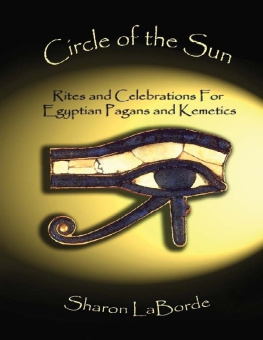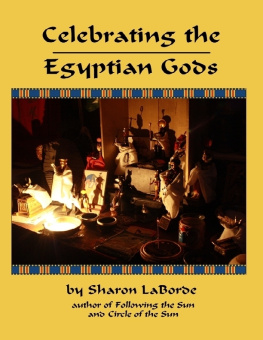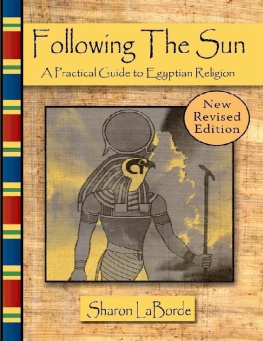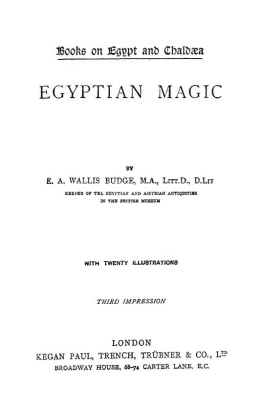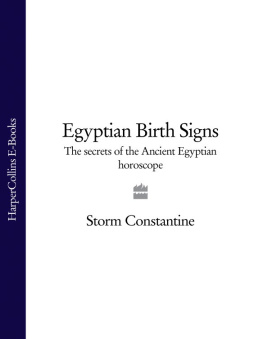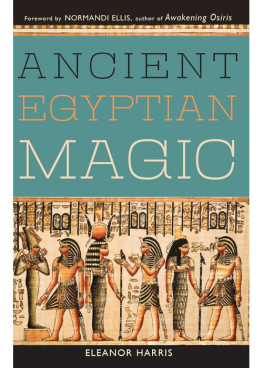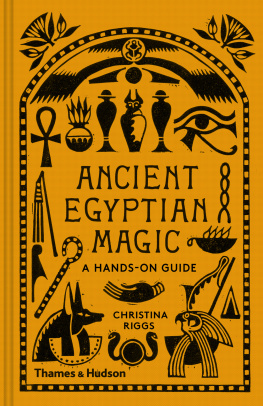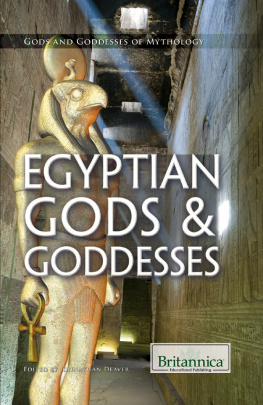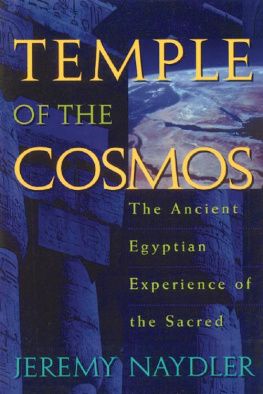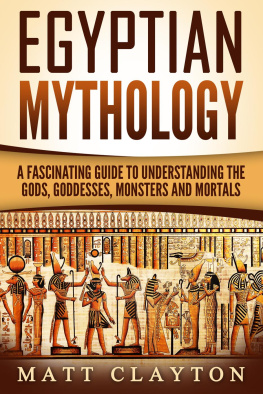A Year of Kemetic Observance
A young Egyptologist could probably spend their entire career just studying Egyptian festivals. No two areas observed the same calendar , and even national holidays varied from one region to another and from one period of time to the next. Surviving records are rich in some details, sparse in others. Scholars have a plethora of information about some holidays, such as the Feasts of the Valley and the Beautiful Reunion, which were observed in temples that remained well-preserved. Other festivals, such as the Feasts of Makhir and Apip, left few references and are now frustratingly obscure.
As an Egyptian Pagan, however, you have the advantage of being allowed to follow your intuition. On more than one occasion I have written and performed a ritual using a "best guess" when I could not find enough published research as a starting point. The resulting service was not only enjoyed by everyone who participated, but also confirmed to be in the correct spirit when I found more historical resources later. Read and study where you can, but don't be afraid to let your instinct guide you when you've reached the limits of available scholarship.
The major holidays listed here are presented in a solitary format, but can be adapted for use as a group ritual. I encourage all readers, Tameran Wiccan , Kemetic Reconstructionist or other, to take a "plug-and-play" approach using components that best fit your needs. Even the most elaborate rituals can still be broken down into component sections or acts. Once you become familiar with the basic forms, you can combine, rearrange or build around them as necessary.
Just bear in mind that whether you are enacting a solitary ritual or a group feast, you are performing . Make sure you have a "script" of your personalized ritual, and give yourself time to read over it and practice beforehand. If you are in a group, make sure that other participants know and understand their parts as well. Of course, if you stumble over a line or a section of the rite it won't mean the end of the world (contrary to fears even some ancient Egyptians had). But a little practice can potentially help you save face. One coven whose open Sabbats I used to attend printed out their Mabon ritual barely an hour before time for circle a few years ago. They mixed up their elements and directions, only discovering the error in mid-quarter call - all while videotaping the ritual!
Reviewing Egyptian Months and Seasons
Ancient Egypt was an agrarian society, but their seasons did not match what we know today. The year began with the Nile floods and Akhet , or Inundation, which began in mid- to late-July and lasted four months. After the floodwaters receded, planting began and the first signs of sprouting grain heralded Peret (also rendered Proyet ), or "Emergence". This season began in mid-November, and actually corresponds to winter in much of the Northern Hemisphere. Egyptian harvest time took place at the start or summer, or Shomu , beginning in March. After four months of summer, the cycle began again.
Months were generally numbered, such as Akhet I, Peret I, Shomu I, and so on. Less often months were referred to by names, which referred to the major feast that took place at the end of that month. So, for example, the month of Hat-Hor (Akhet III) was so named for the "Sailing of Hathor" feast which took place at the end of the month.
Use the tables below to find Egyptian months and holidays with their modern correspondences. Notice that some month names changed from the Middle to the New Kingdom eras; this provides just one more illustration of how Egyptian liturgical calendars evolved over time. As you adapt holidays and dates to your own group or personal practice, you will be simply continuing that tradition.
U se the table b e low to compare Egyptian months with their modern dates. The Greek month names are commonly used in Isian and Tameran systems.
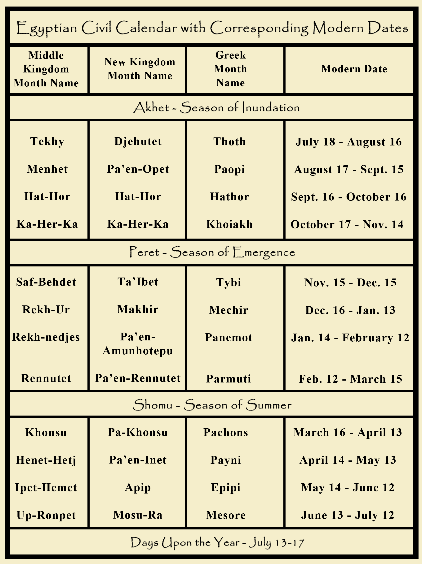
Use this next table to find major Egyptian feast days, and their closest Wiccan Sabbat equivalents (if any).
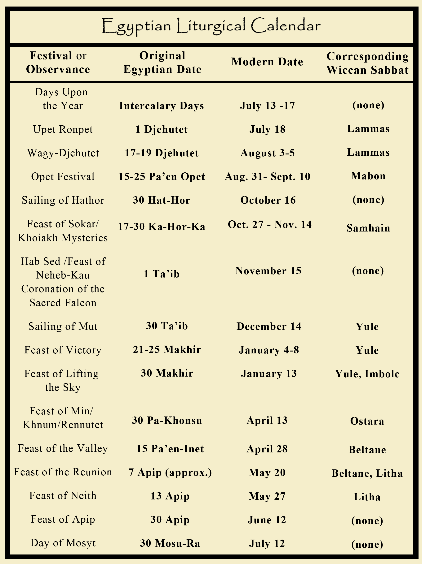
The Festivals
Epagomenal Days - Heru Diu Her Ronpet
Historical background: Following the end of one civil calendar year and preceding the New Year were the Five Epagomenal Days, or the "Five Days Upon the Year" - called the Heriu Diu (the "Five Days") for short. Considered the birth days of the five gods Osiris , Horus , Seth, Isis and Nephthys , the Days Upon the Year were seen as a liminal period when cyclical time, neheh , stopped briefly and linear time, djet , took over.
Because of the potentially precarious state of the universe during this transitional period, Egyptians focused on protective rites for their observances. Sehotep Sakhmet ("Placation of Sakhmet") litanies were read to invoke Sakhmet's protection during the transitional period, and people drew protective charms of deities and magical figures onto white linen to wear around their necks. In temples, torches were kept lit to drive away evil forces. The birthday of Seth was considered an especially precarious time, and wherever possible people avoided conducting transactions or other important business on that day.
During the Late Period, protective rituals became increasingly more complex and paranoid, perhaps reflecting the political climate of the day. Papyrus records detail private rites performed by priests within the Per Ankh , or scriptorium, of temples in order to protect and renew the king. So dangerous were these rites that for most of them a stand-in actually took the king's place . The substitute 'king' was covered with protective amulets and slept on a bed that had a protective ring of sand on the floor around it, all the while keeping a seal of royal inheritance with him. Subsequent rites involved live falcons, vultures and geese, birds associated with gods of kingship, and anointing the king with an actual falcon's tear to symbolize the Eye of Horus .
Other rites meant to allow Ra and Osiris to merge, again referring to the eternally renewing neheh aspect of time embodied by Ra, and the eternally same djet aspect embodied in Osiris. These rituals called for the replacement of a special "mummy" effigy of Osiris housed in a pine box within the Per Ankh . The point at which one form of Osiris was taken out of the coffin so another could be placed inside was seen as a critically dangerous point, and elaborate protective rites were done throughout the entire operation to ensure a safe transition.
For the average Egyptian, the Heriu Diu were probably a time of much anticipation and wishes for good luck in the coming year, just as the time before New Year's is today in most modern cultures.
Modern observance: If one of your patron deities is one of the five born during the Days On the Year, take the opportunity to celebrate them on that day. Find a tall candle to light each evening for prayer, reflection or offerings. If you have goals or requests for the upcoming year, include those in your prayers. Reflect on what things you want to be rid of this year. Use the Invocation to Sakhmet in prayers for good fortune, protection and blessing. If you practice heka , try making a Heriu Diu or New Year's amulet for yourself or your friends.
You will need: Milk, water, food offerings, wine; tall white candles. The glass "jar"-type commonly found in supermarkets or Mexican grocery stores work especially well.
Altar setup: It's not likely that you'll have icons of all five deities celebrated during the Epagomenal Days, but for those whom you do, let Them take center stage on Their appropriate day. Sakhmet can also take prominence, particularly for recitals of Her litany. Make a space on your altar for your holiday candle; while burning it constantly presents a fire hazard, you can leave it lit for as long as you're in that area. (One alternative would be to use battery-powered electric candles and leave them lit for the lifespan of the batteries.) Leave room in the front of the altar space for offerings and flowers; if making amulets, prepare a clean and ritually purified workspace near your altar as well. If you can sprinkle sand or natron at the perimeters, do so. If this is not an option - for example, if you'd end up vacuuming sand or salt out of your carpet! - make four natron bundles and place them at the cardinal points.

